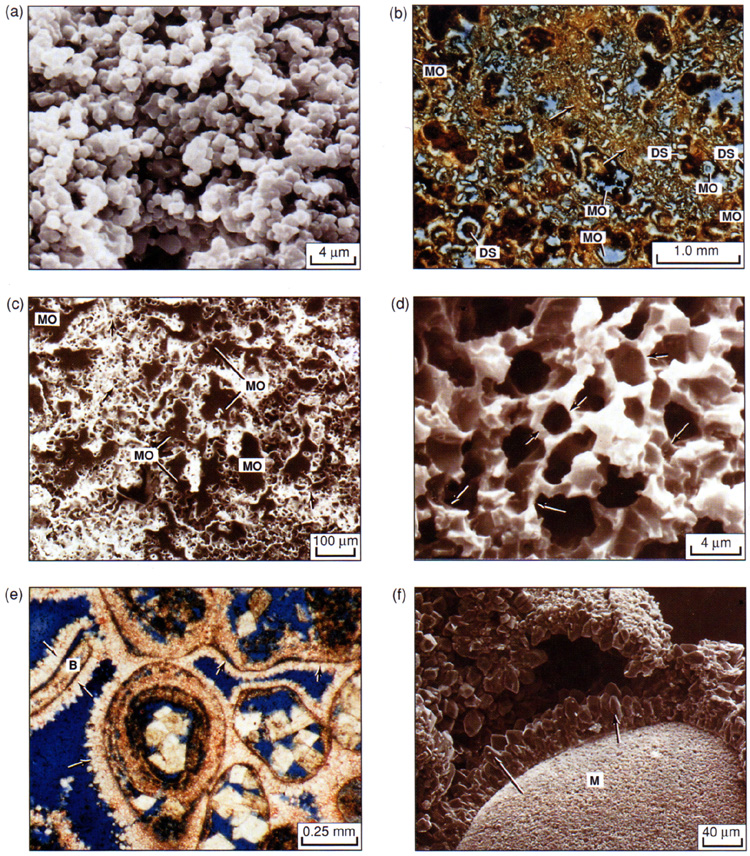
Figure 6. Microporous matrix and microporous cements in Arab Formation carbonates. Porosity in thin section is filled by blue-dyed epoxy, calcite is stained red to pink, other minerals are unstained. (a) SEM view of fractured rock surface of chalky microporous matrix. Microporous matrix is composed of well-sorted calcite crystals generally 1 to 4 microns in size; microporosity occurs as small pores between these micrite crystals (unspecified Mesozoic reservoir, Middle East). (b) Thin section photomicrograph of packstone with abundant moldic (MO) porosity and common microporous matrix (arrows). Moldic porosity is the result of leaching of the dasycladacean algae Salpingoporella (DS) which forms characteristic circular pores. Minor interparticle porosity is present (plane-polarized light, Saudi Arabia, Berri field, Arab-C). (c) SEM image of epoxy pore cast of packstone sample in (b). Moldic pores (MO) are interconnected via a microporous matrix (arrows). This epoxy pore cast was prepared from same sample as the thin section shown in the previous photograph. (d) SEM view of epoxy pore cast of rock with microporous matrix. Tortuous network of laminar pore throats (arrows) intersect to form larger, tetrahedral micropores (Saudi Arabia, Berri field, Arab-C). (e) Thin section photomicrograph of grainstone with abundant fibrous to bladed isopachous calcite cement (arrows). Note leached bivalve (B) that is infilled with later equant sparry calcite cement (plane-polarized light, Saudi Arabia, Qatif field, Arab-C). (f) SEM image of fractured rock surface. Isopachous cement composed of euhedral to subhedral bladed calcite crystals (arrows) partly surrounds micritized grain (M). Cement morphology suggests precipitation within the marine phreatic zone( Saudi Arabia, Ghawar field, Arab-D).
